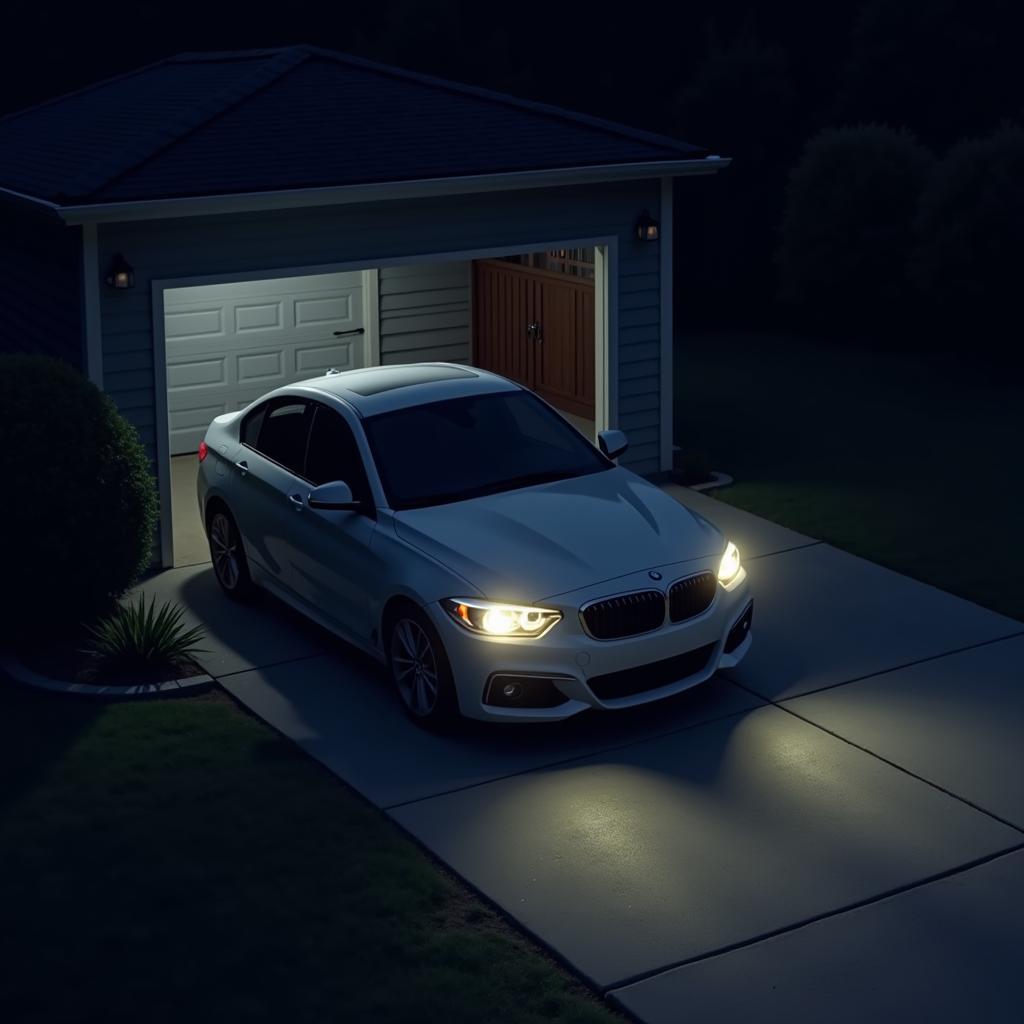A car that won’t start, accompanied by an illuminated charge warning light and brake light, can be a frustrating experience. This often indicates a problem within the electrical system, potentially affecting the battery, alternator, or even the starter. This article provides a comprehensive guide to diagnosing and troubleshooting these issues, empowering you to get back on the road quickly.
Understanding the Warning Lights
The charge warning light, often symbolized by a battery icon, indicates a problem with the charging system. The brake light, while typically signaling brake application, can also illuminate if the brake fluid is low or there’s an issue with the brake light switch. When both lights appear simultaneously with a no-start condition, it often points to a failing battery or a related electrical fault.
Common Causes of a No-Start with Charge and Brake Light On
Dead Battery
The most common culprit is a dead battery. A depleted battery lacks the power to crank the engine and can cause various warning lights to illuminate erratically.
Faulty Alternator
A faulty alternator fails to recharge the battery while the engine is running. This eventually drains the battery, leading to a no-start situation.
Bad Starter
A malfunctioning starter motor can prevent the engine from cranking, even with a fully charged battery. This can sometimes coincide with other warning lights illuminating due to the electrical strain.
Corroded Battery Terminals
Corrosion on the battery terminals can disrupt the flow of electricity, preventing the battery from effectively powering the starter and other electrical components.
Wiring Issues
Damaged or loose wiring within the charging system can also cause the warning lights to come on and prevent the car from starting.
Diagnosing the Problem
-
Check the Battery: Start by visually inspecting the battery terminals for corrosion. Clean them with a wire brush and baking soda solution if necessary. Test the battery voltage using a multimeter. A reading below 12.6 volts typically indicates a weak or dead battery.
-
Test the Alternator: With the engine running, the multimeter should read between 13.5 and 14.5 volts across the battery terminals. A lower reading suggests a faulty alternator.
-
Inspect the Starter: While a starter test requires more specialized tools, you can listen for a clicking sound when attempting to start the car. This clicking often signifies a bad starter solenoid or motor.
-
Check Wiring: Visually inspect the wiring connected to the battery, alternator, and starter for any damage, looseness, or corrosion.
Troubleshooting and Solutions
Jump Starting the Car
If a dead battery is the suspected cause, try jump-starting the car using jumper cables and a donor vehicle. If the car starts, it confirms the battery issue.
Replacing the Battery
If the battery is confirmed to be dead or weak, replacement is the most straightforward solution.
Alternator Replacement
A faulty alternator requires replacement. It’s crucial to address this issue promptly to prevent further battery damage and ensure a reliable charging system.
Starter Repair or Replacement
A malfunctioning starter typically necessitates repair or replacement. This often involves removing the starter motor and either replacing it entirely or rebuilding its internal components.
Wiring Repair
Any damaged or loose wiring within the charging system needs immediate attention. Repair or replace the affected wires to ensure proper electrical flow.
“A simple loose connection can sometimes be the root of a seemingly complex electrical issue,” says John Miller, Senior Automotive Electrical Technician at Miller’s Auto Repair. “Always start with the basics before assuming the worst.”
 Mechanic Inspecting Car Alternator
Mechanic Inspecting Car Alternator
Conclusion
A car that won’t start with the charge warning light and brake light on often stems from problems within the electrical system, including a dead battery, faulty alternator, bad starter, corroded terminals, or wiring issues. By following the diagnostic and troubleshooting steps outlined in this article, you can pinpoint the cause and implement the necessary repairs to get your car running smoothly again. Don’t hesitate to seek professional assistance if you encounter complex electrical problems or are uncomfortable working on your vehicle’s electrical system. Addressing these issues promptly ensures a reliable and safe driving experience.
“Regular battery maintenance, including cleaning the terminals and checking the voltage, can prevent many no-start situations,” adds John Miller. “Preventive care is always the best approach.”
FAQ
-
What does the charge warning light mean? The charge warning light indicates a problem with the charging system, often a failing alternator or a loose connection.
-
Why is my brake light on when I’m not braking? This can indicate low brake fluid, a faulty brake light switch, or an electrical issue related to the brake system.
-
Can I drive my car with the charge warning light on? It’s not recommended. Driving with the charge warning light on can drain the battery and eventually lead to a breakdown.
-
How long does a car battery last? Car batteries typically last between 3 and 5 years, depending on usage and climate.
-
How much does it cost to replace a car battery? The cost of a car battery replacement varies depending on the vehicle and battery type but typically ranges from $100 to $300.
-
Can I replace a car alternator myself? While possible, alternator replacement requires some mechanical skills and tools. It’s often best left to a professional mechanic.
-
How can I prevent car battery problems? Regular maintenance, including cleaning the terminals and checking the voltage, can prolong battery life and prevent many issues.

